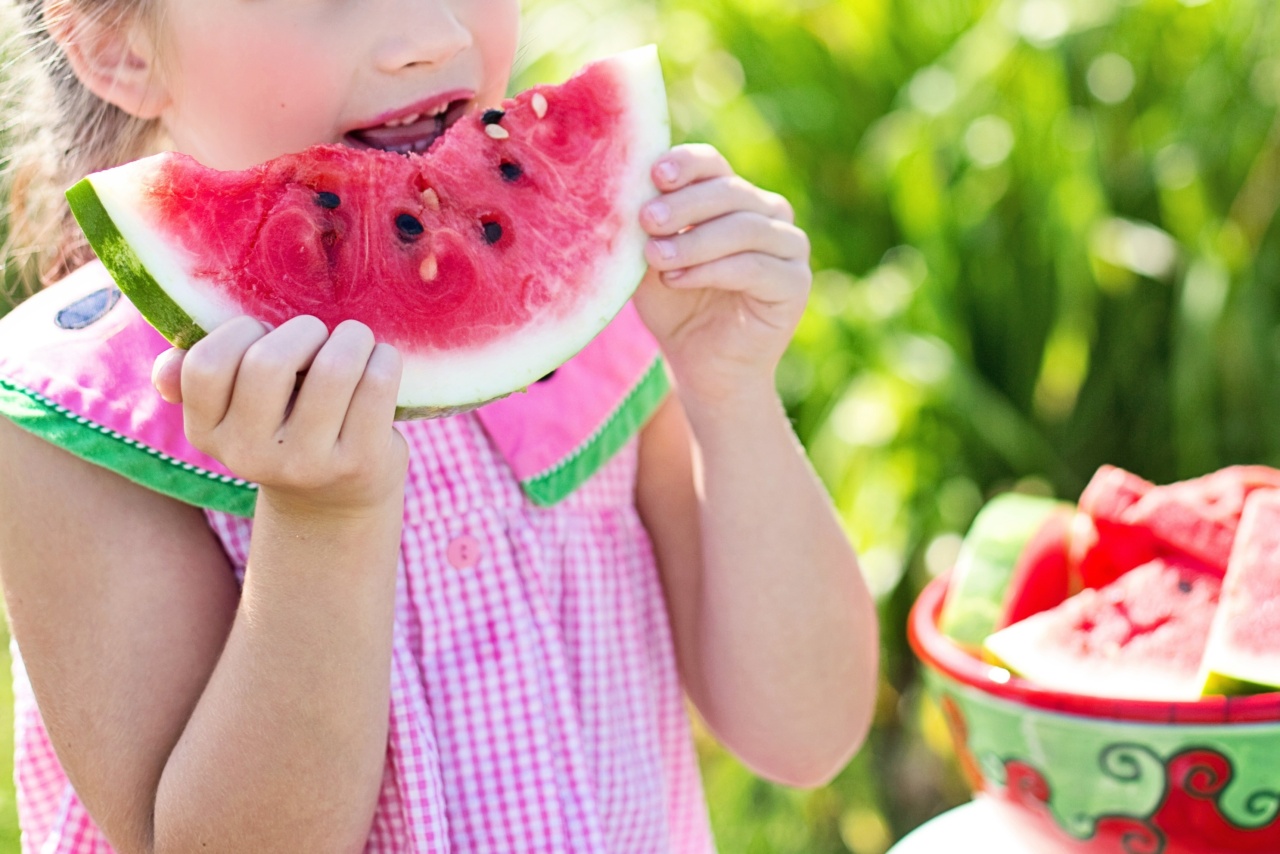As a parent, you want the best for your children. Among the things we strive for is keeping our children healthy and happy so they can reach their maximum potential. One way to achieve that is to establish healthy eating habits from an early age.
The Association of Certified Allergists estimates that allergies affect 1 in 5 Americans, and that number continues to grow every year. Many children suffer from allergies, which can cause physical discomfort, emotional stress, and even life-threatening situations in some cases. In this article, we will explore how we can reduce children’s allergies through healthy eating habits.
Understanding allergies
Allergies occur when our immune system mistakes a harmless substance for a dangerous one. When our body reacts to this substance, it releases histamines that can cause a range of symptoms, from mild to severe.
Common allergens include pollen, dust mites, animal dander, insect stings, and certain foods. Symptoms of allergies can include hives, itching, runny nose, sneezing, watery eyes, coughing, and in extreme cases, anaphylaxis.
The link between diet and allergies
There has been a growing body of research indicating that our diet plays a significant role in preventing and treating allergies.
For instance, studies have shown that children who are introduced to peanuts early on in life (between 4-11 months) are 81% less likely to develop a peanut allergy compared to those who avoid them altogether. Another study found that children who eat oily fish (such as salmon or mackerel) have a lower risk of hay fever and asthma.
Healthy foods to reduce allergies
The following are some of the most potent foods that have been shown to decrease allergies:.
1. Fruits and vegetables
Fruits and vegetables contain powerful antioxidant compounds that reduce inflammation and promote a healthy immune system. Eating a variety of colorful fruits and vegetables can help strengthen the immune system and decrease the risk of allergies.
It is recommended that children have at least five servings of fruits and vegetables per day to ensure they are getting all the necessary nutrients.
2. Probiotics
Probiotics are good bacteria that live in our gut and support a healthy digestive system. Studies have shown that consuming probiotics regularly can decrease the risk of allergies, particularly asthma, eczema and hay fever.
Probiotics can be found in foods such as yogurt, kefir, and fermented vegetables such as sauerkraut or kimchi.
3. Nuts and seeds
Nuts and seeds are an excellent source of healthy fats and protein. They also contain vitamin E and other antioxidants that help reduce inflammation and promote a healthy immune response.
However, some children have nut allergies, so it’s important to check with your doctor before incorporating nut and seed butter into your child’s diet.
4. Oily fish
Oily fish are rich in omega-3 fatty acids, which are essential fats that our body needs to function correctly. Omega-3s help reduce inflammation and support a healthy immune response.
Children who eat oily fish regularly are less likely to develop allergies such as hay fever and asthma.
5. Turmeric
Turmeric is a spice with potent anti-inflammatory properties. It contains curcumin, which has been shown to help reduce inflammation in the body.
Adding turmeric to your cooking is an excellent way to introduce this powerful spice into your child’s diet.
Foods to avoid or limit
While there are foods that can help reduce the risk of allergies, there are some foods that can trigger an allergic reaction. Foods that commonly cause allergies include:.
- Cow’s milk
- Eggs
- Soy
- Wheat
- Shellfish
- Fish
It is important to monitor your child’s reaction to any new food they try and be aware of foods that may contain allergens.
It is also important to note that some children may not be allergic to a specific food, but they may have an intolerance or sensitivity. If you suspect that your child may be allergic or intolerant to a particular food, consult your doctor for advice.
Incorporating healthy eating habits into your child’s life
Establishing healthy eating habits in our children starts with us as parents. Here are some ways to ensure your child receives a healthy, allergy-friendly diet:.
1. Set a positive example
Children learn from us, and if we want them to develop healthy eating habits, we need to lead by example. Eat a variety of healthy foods, and make sure your child sees you enjoying them.
Share meals together and make mealtimes an opportunity to connect and share your day.
2. Involve your child in meal planning
Let your child participate in meal planning and preparation. Children are more likely to eat something they have helped prepare. Encourage your child to choose a new fruit or vegetable to try or come up with a healthy recipe to cook together.
3. Keep healthy snacks on hand
When hunger strikes, it’s easy to reach for a convenience snack that often contains unhealthy ingredients. Keep healthy snacks on hand such as chopped fruits and vegetables, hummus, nuts and seeds, and whole-grain crackers.
4. Make mealtimes fun
Make mealtimes an enjoyable and stress-free experience by creating a positive, fun environment. Consider playing music, lighting candles, or having a family game night at dinner.
5. Avoid processed foods
Processed foods are often filled with sugar, salt, and unhealthy fats, which can lead to inflammation and other health problems. Focus on whole, unprocessed foods that are rich in nutrients and antioxidants.
In conclusion
While allergies can be challenging to manage, incorporating healthy eating habits into your child’s life can help reduce the risk of allergies and promote overall health and well-being.
As parents, we have the power to shape our children’s future health by making conscious choices about the food we feed them. By choosing nutrient-dense, whole foods, and encouraging a positive relationship with food, we can reduce the chances of allergies and help our children lead happy, healthy lives.






























